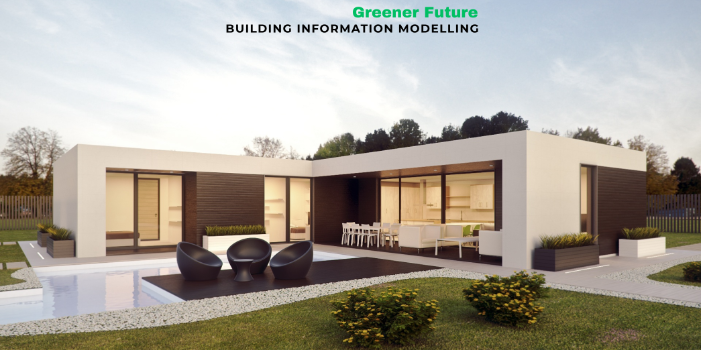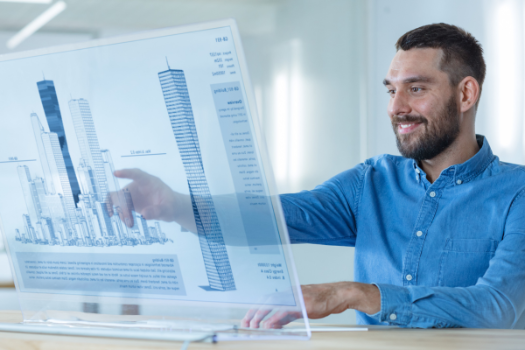
Sustainable Material Selection in BIM: Optimizing for a Greener Future
Introduction: BIM and the Drive for Sustainability
Sustainable construction is more important than ever. Around the world, industries are looking for ways to reduce environmental impact. For the construction industry, choosing sustainable materials is a powerful way to help. It aligns with global goals and can reduce the industry’s carbon footprint. But selecting the right materials can be challenging, which is where technology steps in.
Building Information Modeling (BIM) has become an essential tool for this task. BIM streamlines sustainable practices, particularly in material selection, making it easier to choose eco-friendly options. Not only does this help the environment, but it also boosts long-term economic value by lowering waste and promoting energy efficiency.
Today, BIM is essential in sustainable construction. From green building standards to global initiatives, BIM supports eco-conscious choices that align with the construction industry’s sustainability goals. As the drive for a greener future grows, BIM’s role in sustainable material selection is paving the way forward.
The Role of BIM in Sustainable Material Selection
BIM (Building Information Modeling) is transforming sustainable material selection in construction. Its core functions allow architects, engineers, and contractors to make eco-friendly decisions with greater ease. BIM integrates data from multiple sources, providing a centralized system for tracking and comparing materials based on sustainability factors like carbon footprint, durability, and recyclability.

One of BIM’s most powerful tools is its ability to simulate a material’s entire lifecycle, from production to disposal. This lifecycle analysis helps construction teams make informed choices, reducing waste and minimizing the project’s environmental impact. By digitally modeling materials, BIM makes it easier to avoid unsustainable options that could harm the environment over time.
Across the globe, leading construction projects are using BIM to meet sustainability benchmarks. Projects are seeing real benefits, from reducing costs to achieving green certifications. BIM is not just a digital tool; it’s a practical, real-world solution that supports sustainability goals in every stage of construction. For any team aiming to make greener choices, BIM is the key to responsible material selection.
Key Factors in Sustainable Material Selection through BIM
When selecting materials for sustainable construction, several factors are essential. Recyclability is one; using materials that can be reused or recycled reduces the need for new resources. BIM’s data capabilities help teams evaluate the recycled content in materials, allowing for better choices that cut down on waste and reliance on virgin materials.
Local sourcing is another key factor. Choosing materials produced close to the project site reduces transportation emissions, supporting sustainability. With BIM, teams can access information about suppliers and sources, making it easier to prioritize local options that lower the project’s overall carbon footprint.

Energy efficiency is also crucial. Materials that require less energy to produce or maintain contribute to a project’s environmental performance. BIM can simulate energy needs across a material's lifecycle, helping teams assess the true impact before making a choice.
These considerations, when planned early with BIM, have a powerful cumulative effect on a project’s sustainability. Many successful green projects worldwide rely on these principles, demonstrating that thoughtful material selection through BIM can lead to real, measurable improvements in environmental outcomes.
Optimizing Lifecycle Analysis with BIM for Greener Choices
Lifecycle analysis (LCA) is a vital tool in sustainable construction, as it examines the full environmental impact of materials—from initial production to eventual disposal. By looking at every stage of a material’s life, LCA helps construction teams understand the total environmental cost, guiding more sustainable choices.

BIM enhances LCA by offering a complete, long-term view of how materials perform over time. With BIM, construction professionals can assess factors like energy use, emissions, and durability for each material, quantifying these impacts in clear, measurable terms. This holistic approach gives teams the data they need to compare materials not just for cost but also for their environmental footprint.
This insight into long-term impact encourages responsible choices that prioritize sustainability over short-term gains. Rather than selecting materials that are simply inexpensive or convenient, BIM’s LCA capabilities allow teams to focus on sustainable options that will serve the project and the planet well into the future.
Research supports this approach, showing that projects using LCA in BIM achieve greener outcomes. With BIM-driven LCA, construction professionals have a reliable tool for making environmentally sound decisions that align with broader sustainability goals.
AI and Machine Learning in Sustainable Material Selection
AI and machine learning are transforming sustainable material selection within BIM by adding predictive analytics to the process. With AI, construction teams can assess environmental impacts by analyzing data from previous projects and other relevant parameters. This allows for quicker, data-driven decisions on sustainable materials.
AI doesn’t just speed up the process; it also enhances accuracy. By predicting the long-term effects of materials, AI ensures that chosen options align with sustainability goals and project requirements. This integration of AI within BIM reflects a significant technological leap, reinforcing BIM’s role in leading sustainable practices. These advancements make BIM even more reliable for achieving greener outcomes in construction.
The Future of Sustainable Construction: BIM as a Catalyst
As the construction industry increasingly focuses on sustainability, BIM’s role is set to expand. Emerging trends like digital twins and smart cities are creating even higher demand for eco-friendly materials and sustainable methods. BIM is key to meeting these demands by providing the data and insights needed for greener decision-making.

Sustainable material selection is becoming a central part of climate action in construction. By helping teams choose low-impact materials, BIM supports long-term environmental goals. Experts project that sustainable construction will continue to grow, with BIM leading the way as a trusted tool. In this evolving landscape, BIM remains a catalyst, driving the industry toward a more sustainable future.
Conclusion: Building a Greener Future with BIM
BIM is a powerful tool for sustainable material selection, helping construction projects become greener and more responsible. By leveraging BIM’s data-driven insights, especially through platforms like BidLight, teams can make informed, eco-friendly choices that align with both project and environmental goals. Choosing sustainable materials is essential for a future focused on climate action, and BIM makes this process easier and more effective.
As the industry moves toward greener standards, prioritizing sustainability in every project phase is crucial. Explore BIM solutions like BidLight to lead the way in sustainable construction, where data-driven decisions are shaping a better tomorrow.